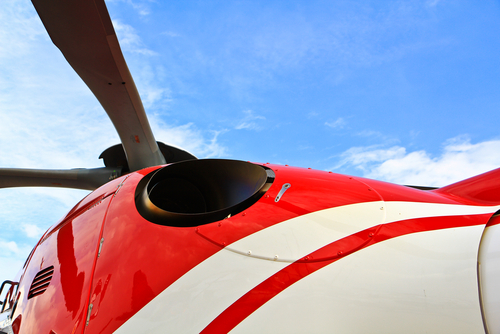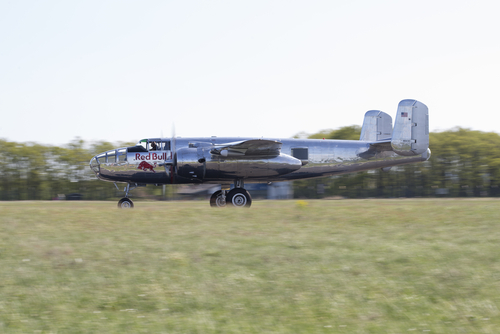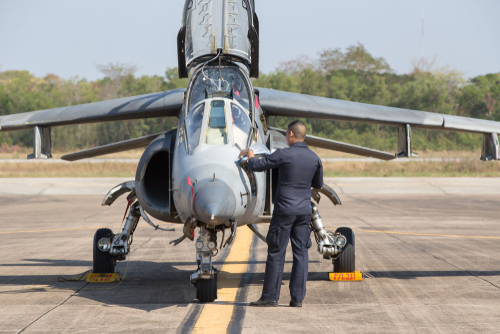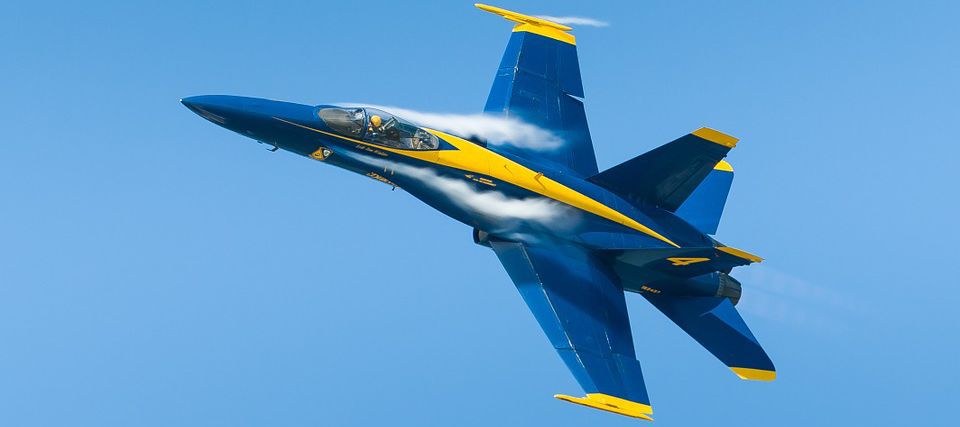Do you know that retired Alpha Jets are finding new homes? In the early 1960s, the various European air forces started to think about their requirements for the coming decades. Among the results was the development of a new generation of jet trainers to substitute such traditional aircraft as the Fouga Magister and the Lockheed T-33. In this practice, the two chief competitors become the Franco-German Dassault-Dornier “Alpha Jet” and the British Aerospace “Hawk.”
The Hawk would finally be the winner in the race, although the Alpha Jet had been a bit ahead. The Alpha Jet was built in high numbers and served with many air forces for decades. This post provides a description and history of the Alpha Jet and the Argentine”FMA Pampa,” a modest jet trainer with some origins in the Alpha Jet design.

ALPHA JET ORIGINS
In the 1960s, French and the British started a collaboration on the development of what was assumed to be a jet trainer/light attack aircraft. The final result of the partnership, the SEPECAT Jaguar, was an excellent aircraft — but its definition had evolved in the meantime, and the kind appeared as a strike full-sized fighter. Two-seat variants of the Jaguar were utilized for an operational conversion, not as high-level trainers as such.
That left the requirement unfulfilled, and the French started discussions with West Germany for collaboration on fulfilling the need. There was a joint specification created in 1968 — the trainer was supersonic trainers having something of a dead-end — and collective development and production agreement were signed in July 1969. The joint agreement indicated that 200 machines would be bought by each of those two countries assembled in their own country. Proposals were created by three groups of producers:
- Dassault, Breguet, & Dornier filed the”TA501″, which was developed through a merger of the earlier Breguet 126 and Dornier P.375 theories.
- SNIAS / MBB submitted the “E.650 Euro trainer”.
- VFW-Fokker submitted the “VFT-291”.
All the projects were to be sponsored by dual SNECMA-Turbomeca Larzac turbofans. The Luftwaffe, the German Air Force, had requested that the trainer have two motors after enduring severe abrasion from injuries with their Lockheed F-104 Starfighters.
With development passed in February 1972, The Breguet-Dassault-Dornier TA501 has announced the winner of this contest in July 1970. Two prototypes were to be made by Dassault in France, that company having bought out Breguet in the meantime, and 2 were to be made by Dornier in Germany. The first French prototype makes its first flight at Istres on 26 October 1973, with the first German model following from Oberpfaffenhofen on 9 January 1974. The two prototypes were in the air before 1974 ended.
The French Air Force (the Armee de l’Aire / AA) chose to use the Alpha Jet primarily as a trainer; the first generation retired Alpha Jets for the AA performed its first flight on 4 November 1978. The AA variant was called the”Alpha Jet E” (with”E” implies “Ecole / School”), or “Alpha Jet Advanced Trainer / Light Attack” aircraft. Primary deliveries to the AA for service trials were in 1978, leading to the introduction of line service in May 1979, substituting the Lockheed / Canadair Silver Star T-33 in jet practice and the Dassault Mystere IVA in weaponry training. 176 production Alpha Jet E systems were delivered up to 1985, not the 200 that had been intended.
The Luftwaffe planned to use the retired Alpha Jets in the light attack role, preferring to continue flight training at the US southwest on trainer types rather than performing training in Germany. The first generation German Alpha Jet performed its first flight on 12 April 1978. It was called the “Alpha Jet A” or “Alpha Jet Close Support” version. The Luftwaffe got 175 systems up to 1983, with the model replacing the Fiat G91R/3. Although retired Alpha Jets was built in France and Germany, the manufacture of subassemblies was partitioned in the two countries, with plants in each country making final assembly and checkout. The four prototypes continued in service as testbeds, for example, assessing a composite graphite-epoxy wing and improved Larzac engine variants.
ALPHA JET DESCRIBED
The Alpha Jet was a pretty small aircraft, with:
- A high-mounted wing with average sweepback, noticeable anhedral droop, and a leading-edge “dogtooth” was inserted during prototype evaluation. The wing had an airbrake on both sides of the fuselage of the tail and big Fowler-type flaps, giving it a good low-speed landing performance.
- A traditional tail design with a tailplane highlights moderate sweepback and powerful anhedral droop, together with a rakishly swept-back tailfin.
- Tricycle landing gear, all with single wheels. The nose gear retracted backward, and the gear tucked up and into the engine nacelles.
- A Turbomeca Larzac turbofan in a pod across the lower side of each fuselage. Generation aircraft featured the Larzac 04-61 version with 13.19 kN (1,345 kg / 2,965 lb) each. Luftwaffe systems were updated with the Larzac 04-C20 version with 14.12 kN (1,440 kg / 3,175 lbs) thrust each.
The tandem-seat cockpit included individual clamshell-type canopies connected at the back. The French Alpha Jet E was equipped with Martin-Baker AJRM4 ejection chairs, whereas the German Alpha Jet A was furnished with UPC / Stencel S-III-F3 eviction seats. The rear seat was prominently inflated, giving a forward view to the trainer in the back seat. There was a baggage section in the tail for hauling a personal kit when traveling to a remote airfield.
The avionics match of French Alpha Jets was fundamental. The Luftwaffe systems have been outfitted with a comparatively complicated nav-attack arrangement, including a Kaiser / VDO head-up display (HUD), a Litton Doppler navigation radar, and a Lear-Siegler inertial navigation system (INS). The different avionics fit made Alpha Jets simple to tell apart, with French machines with a rounded-off nose, while machines had a sharp nose, which gave them a waspish appearance.
The Alpha Jet might be outfitted with a belly cannon pod while it didn’t have integrated armament. Luftwaffe cannon pods included a single Mauser BK-27 mm cannon, whereas AA included a single DEFA 30-mm cannon, including 150 rounds. The German and French Alpha Jets were furnished with a gunsight.
The Alpha Jet might be outfitted with double stores pylons below each wing for four pylons, with a total external load capacity of 2,500 kilograms (5,500 pounds), impressive for the small size of this aircraft. Possible external shops comprised iron bombs, unguided rocket pods, and cluster munitions, and two external tanks, with a capacity of 450 liters (119 US gallons) or 310 liters (82 US gallons) each.
The Alpha Jet could take heat-seeking air-to-air missiles (AAMs) for self-defense, but it lacked radar and couldn’t carry radar-guided AAMs. It could include laser-guided bombs. However, laser targeting had to be given by ground forces or a spotting aircraft. The French obtained a film-camera pod, and the kind could be used as a target tug.
The Alpha Jet was stated to be a fantastic performer and agile. It stays the present bracket for the AA “Patrouille de France” flight display unit, which has managed the kind since 1979. Needless to say, the Patrouille de France systems have stylish aerobatic team hues.
Alpha Jet In International Service/ Improved Models
Considerable foreign sales were anticipated for the Alpha Jet, with the type becoming available before its main competitor, the British Aerospace Hawk trainer and light strike aircraft. Although, the Hawk ended up winning the competition without argument.
The first major foreign clients for the Alpha Jet were Egypt and Belgium, with both nations doing final assembly of French-configuration Alpha Jet E systems. Belgium ordered 33 aircraft under the name of “Alpha Jet 1B”, with an assembly by SABCA of Belgium and deliveries in 1978:1980. They’ve been used, at least informally, in flashy color schemes, for public flight presentations.
The survivors were upgraded by SABCA into “Alpha Jet 1B+” or just “Alpha Jet +” configuration, with a laser-gyro inertial navigation system with a GPS receiver; a HUD repeater at the back and a HUD in the front cockpit; a video recorder; and other modest improvements. The first “+” was redelivered in 2000; they were finally retired in late 2019.
Egypt ordered 30 aircraft named “Alpha Jet MS1″ in the early 1980s. Four aircraft were provided by Dassault, with the other 26 built from knockdown kits in Egypt by AOI.
Several Other countries also obtained the Alpha Jet E, such as Morocco (24), Nigeria (24), the Ivory Coast (7 aircraft), Qatar (6″Alpha Jet C”), and Togo (5). All these machines were from French production except for the 24 Nigerian aircraft obtained from German manufacturing. Photographs of Qatari Alpha Jet E systems displayed them painted in brown-&-sand aggressive desert camouflage on the surface and light blue on the bottom.
Also, they featured an unusual long spine running from the tailfin around mid-wing. Moroccan Alpha Jets have the same colors; three have been made up for cloud-seeding, and a weather radar in a thimble nose radome, and cartridges given from AN/ALE-40 chaff-flare dispenser.
The Luftwaffe started to phase out their Alpha Jet A machines in 1992, reserving 45 for lead-in fighter training. 50 were carried to Portugal, with five of these used as hulks. Portuguese Alpha Jets operated with the “Asas de Portugal” flight display unit, which flew on an on-off basis.
The last Luftwaffe Alpha Jet quit service in 1998. In 1999, 25 more were offered to Thailand to substitute OV-10 Broncos in the patrol role border, while the British Defense Evaluation & Research Agency (DERA, now QinetiQ) acquired 12 as chase aircraft, flight test platforms, etc. The British and the Thais used five of the plane as spared hulks.
The Alpha Jets were traded at a rock-bottom price. They were consuming money just lying in mothballs; Fairchild-Dornier obtained a contract worth USD 43 million to repair the machines and offer support to the end-users. Evidently, 32 more, including two spares hulks, were provided to the United Arab Emirates (UAE). However, specifics are uncertain, while two ended up in Nigerian hands after passing through a private purchaser.

Three were received from the “Flying Bulls” flight display team, which operates out of Austria and flies a classic aircraft range. 16 of these were acquired by Discovery Air Defence Services (DADS) of Montreal, Canada — currently Top Aces — primarily to give adversary training and combat support for Canadian and other military forces. The Top Aces systems are painted in very combative disruptive splinter camouflage designs.
The Portuguese Alpha Jets was eventually retired in 2018. Portugal was left without a fighter pilot training capability, with the choice made to contract training out to the US Air Force. French Alpha Jet E systems are still going strong, though their first cockpit design proved too old-fashioned to make the most suitable to train AA pilots for the modern Dassault Rafale multi-role fighter jet with its “glass cockpit.” In late 2008,
Thales of France and SABCA were awarded a contract to update 20 AA Alpha Jets into a”+” configuration similar to that obtained by Belgium, one additional characteristic of the French upgrade being “hands-on throttle & stick (HOTAS)” buttons. The original modernized AA aircraft was transported in 2011.
In 1980, work started on an “Alternate Close Service” version of the Alpha Jet, including a Thomson-CSF VE-110 HUD, a SAGEM ULISS 81 INS; a TMV630 laser rangefinder at an adjusted nose and a TRT AHV 9 radio altimeter, with avionics connected through an automated data bus. The first flight was on 9 April 1982. Cameroon got 7 (some sources claim 6), and Egypt obtained 15. Much like the original Egyptian arrangement for MS1 machines, Dassault supplied four such systems under the label of “MS2” and AOI of Egypt assembled another eleven from knockdown kits.
There were several additional Alpha Jet proposals which never reached production:
- The”Alpha Jet 2″, initially the”Alpha Jet NGEA” was to feature the primary MS2 avionics, plus carriage of the innovative French Matra Magic 2 AAMs, and the stronger Larzac 04-C20 turbofans reassembled to Luftwaffe Alpha Jet A Systems. A prototype was flown, presumably a new version of one of the initial Alpha Jet prototypes, but details are unclear.
- The “Alpha Jet 3 Advanced Training System”, initially the”Lancier,” comprised dual-cockpit multi-function displays (MFDs) and possible carriage of AGAVE or Anemone radar; a forward-looking infrared (FLIR) imager; a laser targeting system; and a modern countermeasures suite. There was A prototype flown, again presumably an upgrade of an original Alpha Jet prototype, but as above specifications are unclear.
- Eventually, Dassault suggested a carrier-based trainer, with arresting hook and more robust landing gear, for the French naval air arm, the Aeronavale.
RUAG of Switzerland gives support services for old Alpha Jets, as does Alpha Jets INC of the USA. Three Alpha Jets was acquired by the”Flying Bulls” flight demonstration unit, which works out of Austria and goes a range of classic aircraft; some are flown independently as airshow demonstrators.
The inclination of the”recycled” Alpha Jets is compelling and confusing. As mentioned, Top Aces obtained some of these for adversary training. Air USA of New Mexico similarly operates Alpha Jets for adversary training; three are employed by Australian troops for that role. The US National Aeronautics & Space Administration’s (NASA) Ames center managed one for tests and trials.



